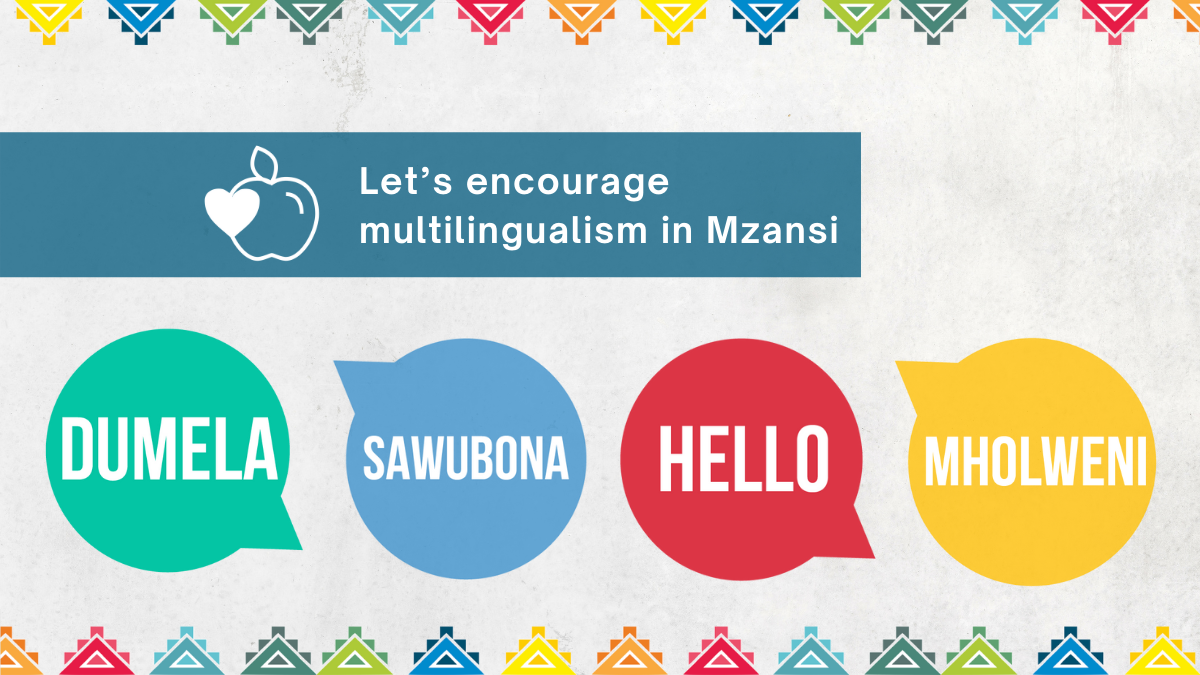How often are students told that in order to have a successful career, they must excel at subjects like Mathematics or Science? And yes, to be an engineer, a doctor, or even a pilot is an admirable and needed profession, but what impact would it have if we emphasised, from early on, the benefits of being able to speak multiple African languages as well? Just think how many more patients a multilingual doctor could help?
What it means to be multilingual in South Africa
Research shows that when a child learns additional languages, it enhances their creativity, listening skills, critical thinking and concentration, to name a few. In South Africa, there are ample advantages to being bilingual and multilingual. We live in a culturally-rich country with 11 official languages. We’re even called the rainbow nation, which is fitting since a rainbow is a symbol of hope and represents diversity and inclusivity.
Learning additional languages in our context is an opportunity for us to understand one another, have empathy, and be tolerant of cultural differences. When you can communicate with people from all walks of life, you’re offered a chance to connect, build relationships, and enrich your life through new ways of thinking. Is that not something worth cultivating for our children – the future of our country?
How do we teach and learn a language?
Even though we have a lot to gain from learning additional languages, we haven’t equipped our educators well enough to teach African languages. Just because a teacher is able to speak a language, doesn’t mean they are able to teach it.
According to the Curriculum and Assessment Policy Statement for Foundation Phase Grades 1–3, when a child learns an additional language, they need as much exposure to the language as possible. There should be a balance between listening to the language for information and comprehension purposes (e.g. through dialogue or instructions) and for enjoyment (e.g. through songs and storytelling). This is what builds a wide vocabulary. Furthermore, teaching an African language involves more than just developing language skills; it should also include the cultural practices and customs inherent to the language.
The value of captivating resources and tools
For teachers, teaching an African language holds many challenges. For one, resources are limited. While there are copious resources to aid teaching in English, for example, there’s a distinct scarcity of teaching material and training to facilitate the teaching of African languages. The 2011 census reported isiZulu as South Africa’s most spoken language, followed by isiXhosa, Afrikaans and then English. With these figures, is it not clear that we need more compelling resources that promote African language teaching?
A language is dynamic, and its implementation in the classroom should be a stimulating and insightful experience. However, teaching an additional language from a textbook can be dull. Language is how we communicate our beliefs, ideas, and feelings. It’s also an expression of culture. Can a textbook alone really capture all of those nuances? Teachers of African languages also grapple with pronunciation. Unless you’re a mother-tongue speaker, there’s a lot of anxiety paired with teaching the correct pronunciation and, unfortunately, textbooks don’t demonstrate how a word should sound.
Language is learnt through repetition. Children need as much exposure to an additional language as possible, but how can they successfully expand their vocabulary if they only hear the language in the classroom, every other day? Students need the necessary tools to practise their language skills and interact outside of the classroom as well.
Mastering an African language with Nqoba SA
Created by teachers for teachers, the Nqoba learning programme empowers teachers to teach African languages with understanding and be able to answer questions about African culture. Support structures for families who find it hard to assist learners with homework or challenging tasks is also available, per appointment at a low cost. Presentations, workshops, and training on how to use the programme is available on request for learners, teachers, and parents who wish to use the programme.
The CAPS-aligned programme consists of audio and written material that assist with the correct pronunciation of sounds and letters. Currently, the programme is available in isiZulu and isiXhosa, with Sesotho being imminent.
As the world becomes more westernised, it’s vital for us as South Africans to nurture African languages because if we don’t, it could become extinct. The Nqoba learning programme is designed to create independent learners who can communicate confidently in an African language. It encourages learners to enjoy learning and understand the language, through songs, rhymes, storytelling and cultural experiences. In this way, knowledge is shared from one generation to another.
As Nelson Mandela said, ‘If you talk to a man in a language he understands, that goes to his head. If you talk to him in his language, that goes to his heart.’



